How To Grill The Best Burgers
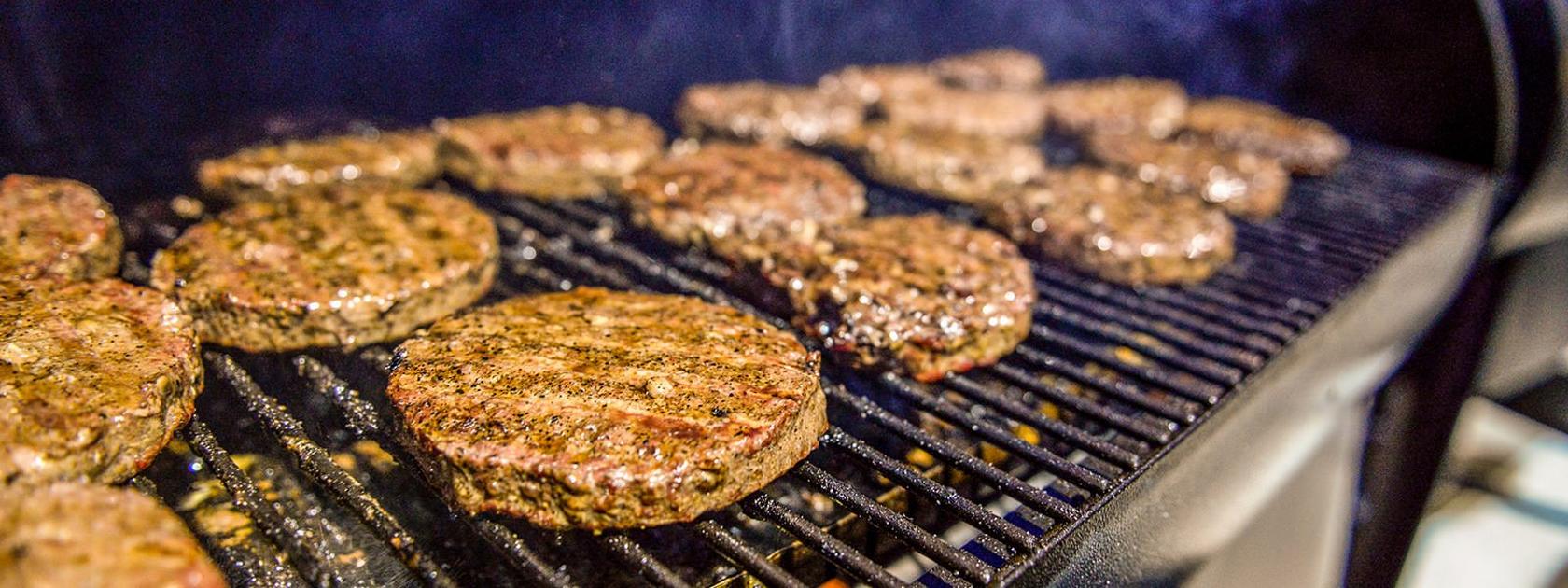
When it comes to backyard BBQ, a good burger can make or break the party. We go over patty creation and grilling burgers to perfection on your grill in order to achieve burger glory. Trying out our tips on your Traeger? Share your burger photos on social media with #TraegerGrills.
Best Meat For Burgers
The long and winding road to burger glory begins way before it’s time to fire up the grill. The most important part of crafting the perfect hamburger is actually making sure you’ve got the right meat to get the job done.
When you’re using a recipe to make a burger, you’ll normally be asked to use ground beef – but if you see anything in the store that’s simply labelled ground beef, it’s normally just code for some random collection of cuts that have all been mushed together.
We recommend you go with one of three more identifiable and consistent specific types of ground beef.
- Ground sirloin - this cut will normally give you a tasty and wholesome beef flavor, and because it’s cut from the midsection, ground sirloin tends to give you fat content between 7 and 10 percent. That’s way too low, but we’ll get to that in a minute.
- Ground rounds - normally lean and tough. Fat content here can be as low as 10 percent which isn’t really enough to render the best flavor.
- Ground chuck - knowing what we know about ground beef, sirloin, and rounds, that leaves ground chuck as the superior choice. Ground chuck is cut from the shoulder and is normally between 15 and 20 percent fat. This is the perfect fatty sweet spot in order to keep your burger from drying out while giving you the perfect amount of flavor. Ground chuck is tender and it’s way richer in flavor.
Your burger will only be as good as the meat that you choose, so choose wisely. Lean beef makes for dry burgers.
Best Burger Seasoning
Never forget: whenever you’re seasoning a burger, less is more. The goal is to accent the meaty goodness of the patty.
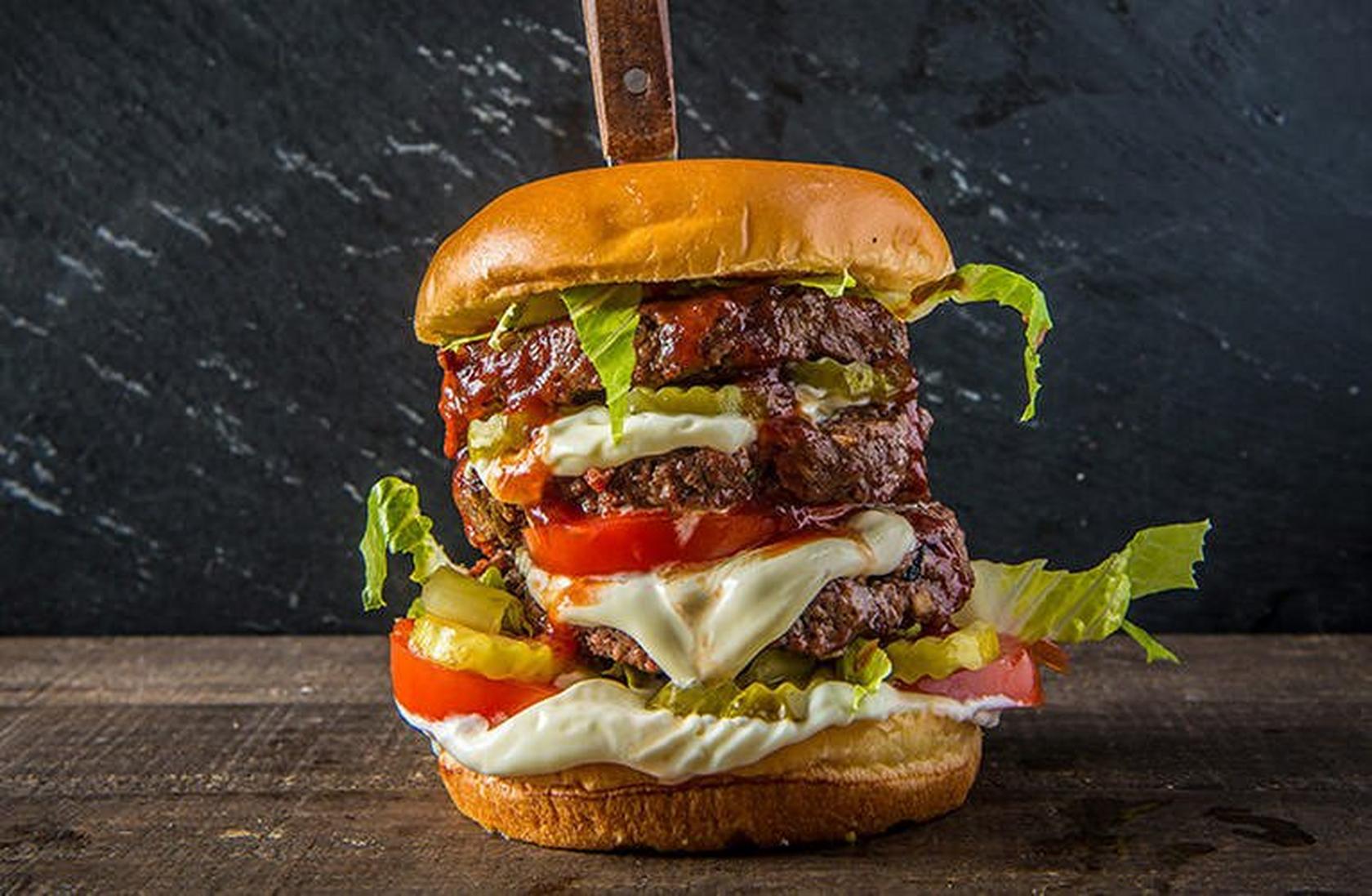
You’re going to run into loads of simple burger seasoning recipes that are built around just salt and pepper. A little minced dried onion, garlic, and brown sugar won’t let you down either. From there, you might want to add cayenne or red pepper to give it a smoky profile, and maybe some rosemary, too – but don’t go wild.
Too many spices or coarse additions to a burger patty can make it more prone to fall apart when you flip it.
The best solution to make sure you’ve got the best burger seasoning is normally to go with a beef rub that’s been crafted around the type of cut you’re using and the way you’re grilling it. For example, Traeger’s Prime Rib Rub is designed to bring out the best in beef alone, and it’s best paired with Mesquite wood pellets.
Whatever seasoning you go for, try to keep it simple and play to your audience.
How To Make Hamburger Patties
However you choose to season, wait until just before you plan to throw those bad boys on the grill. If you want that tender, juice-down-your-chin bite, restrain your salt and pepper shaker until just before you toss them on the grill.
This allows the rub time to adhere to the meat without starting to dry out. Add any additional rubs or seasoning according to taste.
After seasoning, it’s time to get in the thick of it. Don’t overwork your burger. For a tender and moist burger, we advise you don’t over pack your meat. Using wet hands, gently form the meat into 1 ½-inch patties – but don’t overwork it. This isn’t Play-Doh, and the more you handle and squash the meat, the tougher it will be.
As soon as your hamburger patties are holding together, stop what you’re doing. No more. That’s it. You’re done.
Burger Patty Size
The thicker the burger, the juicier the burger. It might be tempting to try and spread the wealth and make thinner patties if you’ve got a big barbecue to cater – but if you lose size, you’re also going to lose taste.
That means when sizing your patties, you’ve got to make them big. Classic burgers normally range from a quarter pound to 6 ounces, but there’s no shame in bringing your portions right up to 8 ounces which makes for patties of about 1 ½ inches thick.
In fact, you should actually size your burgers slightly larger than the bun no matter what size you’re shooting for in order to accommodate for a little shrinking as the meat cooks. This will lead to the perfect burger-to-bun ratio.
Tip from the Pros: use your thumb to make indentations in your patties prior to the cook. This step allows them to keep their shape, so they stay flat and don't inflate.
Best Wood Pellets For Smoking Burgers
The wood pellets for you are going to depend a lot on the seasoning you’ve used. Mesquite pellets offer a smokier and robust taste you can pair with spicy BBQ flavors, while natural Hickory gives off a big punch that goes well if you’ve added garlic or a bit of spice to your seasoning.
In fact, pretty much any pellet apart from Apple works well with beef. Unless you’re after a fruity burger, leave Apple pellets to veggies, pork, and chicken.
Let’s face it, not all burgers are created equal. When it comes to a wood-fired burger versus a charcoal or gas burner burger, there’s just no comparison. The taste, versatility, ease, and consistency of cooking on a wood pellet grill make hamburgers taste smokin’ without all the fuss. No matter how you grill it, hamburgers come off tasting better because cooking over 100 percent all-natural hardwood just tastes better and makes more sense.
What makes wood pellets so great? They burn hotter and slower than wood chips, giving grillers more control over burger temperature. They also deliver a more consistent smoke with little ash or build-up.
Temperature For Grilling Hamburgers
Making sure the grill is hot, and allowing your grill to preheat is CRUCIAL.
For grilling burgers, you should set the grill to the highest setting. Depending on the grill model, there may be a "High" setting (temperature will range from 400 to 450 degrees Fahrenheit) or your grill may have the ability to set exactly to 500 degrees.
One of the benefits of grilling on a wood pellet grill is that you can get wood-fired flavor on your grilled burgers. For smoked burgers, set the temperature to 225 degrees Fahrenheit or to Smoke or Super Smoke depending on the grill you have for 25-30 minutes. Once you’ve smoked your patties, take the burgers off the grill and preheat your Traeger to the highest setting before grilling. This will help you get the perfect sear on the outside, create a caramelized, flavorful exterior, and prevent the burger from sticking to the grill.
How Long To Cook A Burger
When you’re ready to sear your patties and with the grill set to the highest setting, the cook time for the perfect burger (1 ½-inch thick patties) is about eight minutes or four minutes per side.
When it comes to flipping the burgers, only flip once in the middle of the cook. After your patties hit the grill, leave them alone. Resist the urge to squish the burger with a spatula. You’ll just be pushing out all that precious, delicious juice.
Cook about two minutes per side for rare, three minutes for medium rare, four minutes for medium, and five minutes for well done.
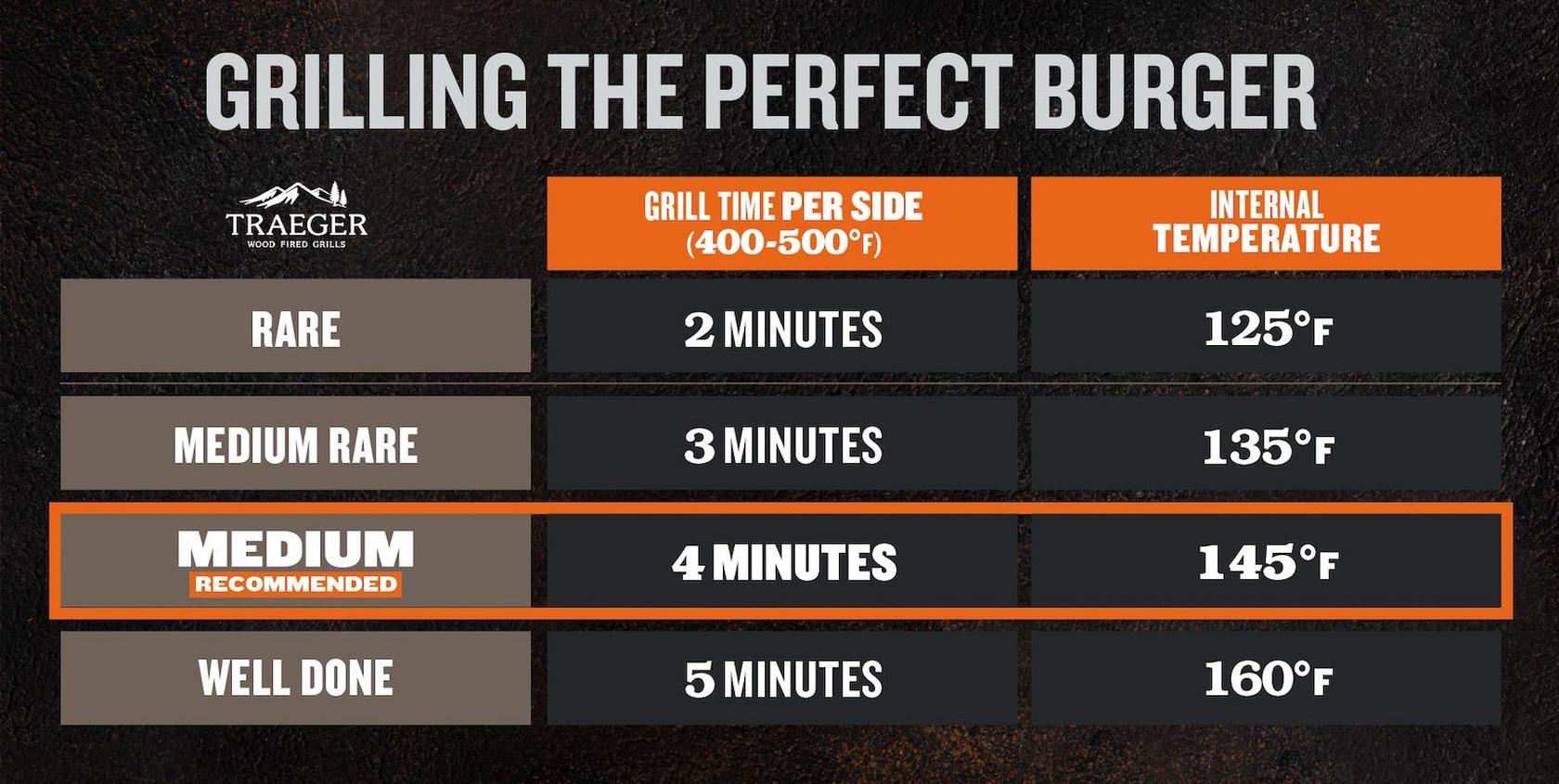
Internal Temperatures For Burgers
Because cook time will vary depending on the thickness of the burger patty, we recommend cooking by internal temperature* using a MEATER thermometer, to ensure you don't over or undercook your burger.
Safety first, and so it’s worth pointing out the USDA recommends burgers be cooked to a minimum internal temperature of 160 degrees Fahrenheit. But that’s well done, and we recommend going for a nice wholesome medium to reach that optimal level of meaty goodness.
| Doneness | Cooking Time Per Side | Internal Temperature | | Rare | 2 minutes | 125°F | | Medium Rare | 3 minutes | 135°F | | Medium | 4 minutes | 145°F | | Well Done | 5 minutes | 160°F |
Toasting Buns
This one definitely isn’t rocket science. Toasting your burger bun will give you a nice crisp texture, soft interior, and those sexy grill marks everybody loves.
The solution? As always, less is more. Spread a thin layer of butter or mayo on the inside of your bun and place it face down on the grill for the last minute (absolutely no longer) of cooking. Not only will it give your burgers that extra crisp crunch, but you’ll be preserving enough moisture in the bun to lock in all the flavor.
Melting Cheese
This is it: the pièce de résistance. The grand finale. The cherry on top. The perfect burger needs the perfect cheese, and that cheese has got to be melted.
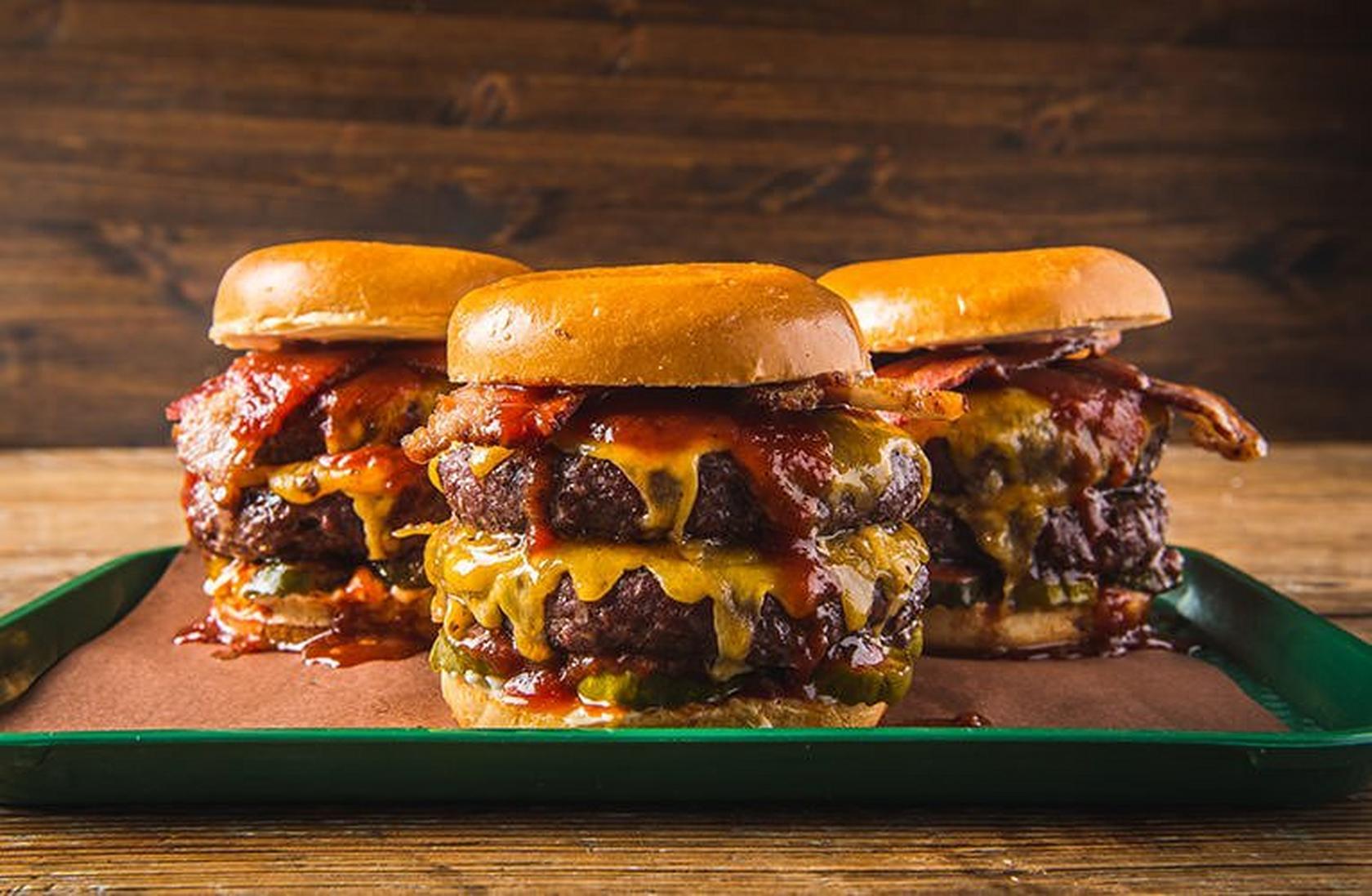
When one side of your burger is done and the other is within two minutes of finishing, your cheese should be the last item to add. Lay the cheese on top of your burger so it melts. You’ll normally get the best melt if you close your grill lid, and 2 to 3 minutes will do it for most cheeses.
From there, all you’ve got to do is top your burger with your favorite fixin’s and enjoy!
HOW TO COOK BURGERS ON PELLET GRILL
If you want your burgers to be the star of the show, you should be cooking them on a pellet grill. The flavor benefits are totally worth it, because you’ll get a bolder, smokier taste that perfectly accents the natural, meaty goodness of your well-selected ground chuck.
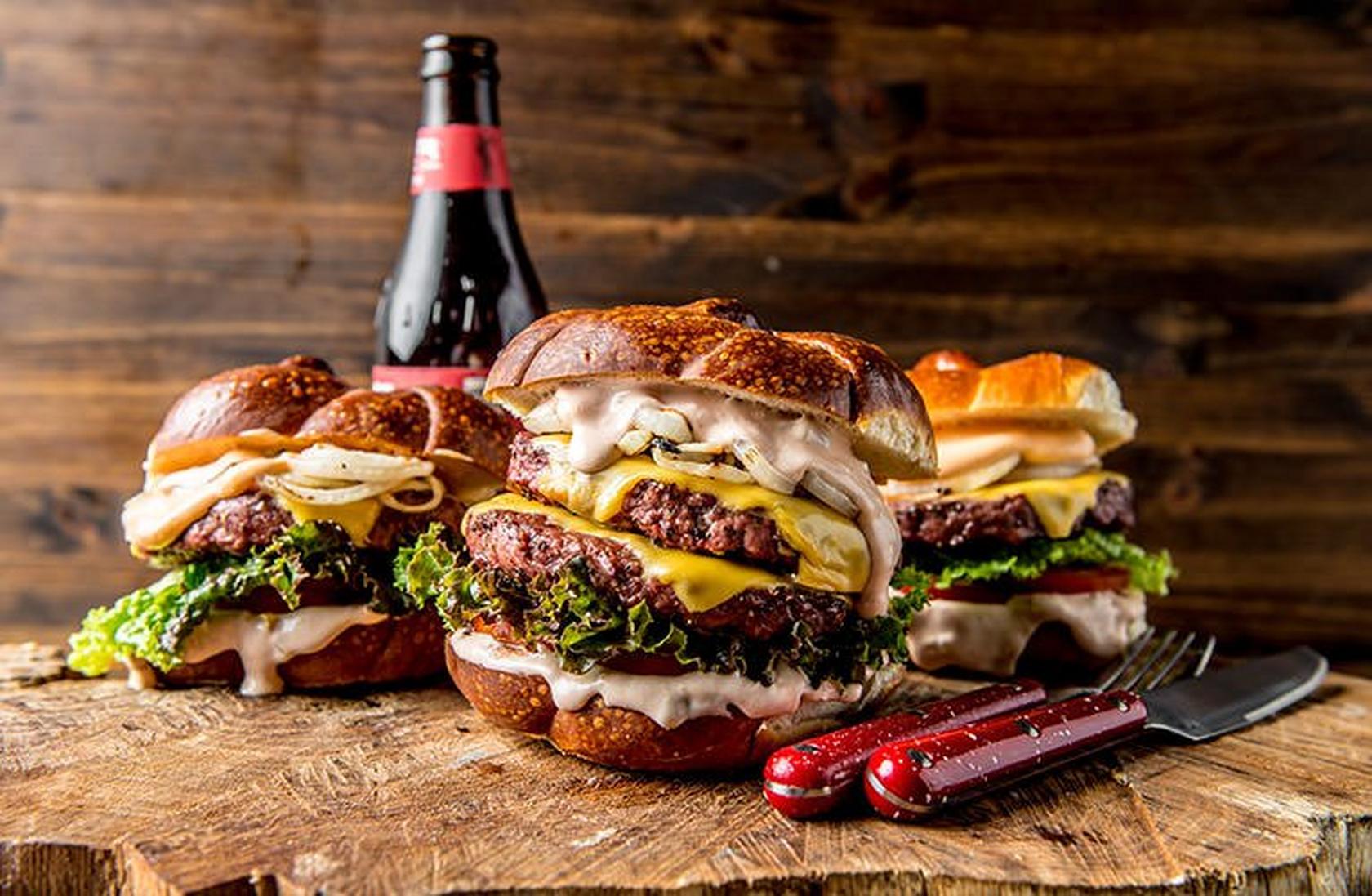
When you cook a burger with a pellet grill, it’s just going to taste better. Logistically, pellets are also a simpler choice because they burn slow and hot, giving you great temperature control and consistency. A simple start-up also gets you grilling faster, while the convection heating process eliminates any flare ups as well as the need to babysit the grill.
So, what grill temperature should be set for burgers?
You can grill your burgers at 450 degrees Fahrenheit or High setting on your grill.
What grill temperature should be set for smoked burgers?
225 degrees Fahrenheit until the patties have reached an internal temperature of 125 degrees Fahrenheit which will take about 25-30 minutes. Then, take the patties out, preheat your grill to 450 degrees Fahrenheit or High, then place the patties back in to sear and grill to your desired doneness (see temperature chart above).
Other Cooking Methods
Nothing compares to a wood-fired burger. If you're just grilling, you aren't delivering as much flavor from your burgers as you could be. That's why we say: Stop Grilling. Start Traegering.
But if you’ve not got the right tools yet to reach the pinnacle of your burger game, don’t panic. There are plenty of other methods, and if you need help with a few of the basics, we’ve got you covered.
HOW TO COOK BURGERS ON CHARCOAL GRILL
Charcoal takes time. And you need patience.
After prepping your patties and seasoning, the trickiest bit with a charcoal grill is lighting and heating. Just like wood pellets, not all briquettes are created equal. Finding charcoal that best complements the natural beefy flavor you’re shooting for could take time. It typically takes between 50 and 60 charcoal briquettes to cover the average grill, and after adding fuel, you’re looking at an average wait of 15 minutes to get them hot.
You’ll know it’s game time once the charcoals are looking slightly ashy or white in color and are glowing hot.
The biggest drawback with charcoal is you’ve got no temperature regulation. You’re relying a lot on the elements, and hot spots and flare ups can be unfortunately common. As with all the other cooking methods we’ve run through, the internal temperature of your desired level of doneness will be the same as any other grill type. Because you have little control over grill temperature, it’s a bit trickier to figure out cooking times. You’ll average between 5 and 8 minutes per side – but to be safe, you’re really gonna want to use an instant-read thermometer and keep your eye out on your burgers.
HOW TO GRILL BURGERS ON GAS GRILL
If you’re grilling with gas or propane, all the same rules on patty selection, shaping, and seasoning apply. Your temperatures, times, and flavors are going to vary, though.
For medium-rare burgers on a gas grill, you’ll need to cook for around five minutes each side to get that nice, red inside. Medium burgers will take six minutes per side, and medium-well needs seven minutes. If you’re measuring by internal temperature, you can still reference our fancy table – internal temperatures stay the same no matter how you’re cooking.
Just like a Traeger, you’ll need your gas grill setting as high as you can make it (shoot for 400 degrees Fahrenheit if you can) but unlike a Traeger, even heat distribution might be an issue, and you’ll need to look out for hot spots (that’s just the way the burger crumbles).
If you’re wondering what to expect flavor-wise, a gas or propane-powered grill is going to give you something very different than you might produce with pellets. You won’t get that amazing smokiness cooking with gas, but you will get a fiery taste that’s a bit more neutral. Most grill masters will try to add liquid smoke to their gas grilled burgers to try and mimic the effect – normally in the marinade or by adding the right sauce after taking them off the grill.
If you’re cooking with gas, you should always grill burgers with the lid closed. This will prevent flare ups, cook your burgers faster, and deliver a lot more consistency.
HOW TO COOK BURGERS ON THE STOVE
Pan frying a burger on the stove isn’t quite as exciting as getting outside and firing up the grill, but it’s a quick win if the weather isn’t playing ball, and you’re under pressure to deliver lots of burgers fast.
One important point you’d better take down is that stovetop burgers cannot be nearly as thick as what you’d normally go for in a nice burger. That’s because you’re relying exclusively on external contact with the pan in order to cook your burger, so it’s hard to get that heat to penetrate the insides of your patty without scorching the outside.
In terms of your cooking temperature, you’ll want to heat a little bit of oil in your skillet to around 350 degrees Fahrenheit over a medium heat. After that, you’re ready to place your burgers on the skillet and relish every second of that euphoric soundtrack of sizzling beef. Just try not to enjoy the sizzling so much that you overcook the burger.
Another hitch you might run into is that depending on the patties you’ve opted for and the size you’ve made them, you might end up with a lot of fat and moisture left sitting in the pan. This will increase your cooking time – although if you’ve gone a little bit thinner for your patty, you can normally expect to finish each burger within 3 to 5 minutes per side if you’re aiming for medium.
Ready to grab your own taste of burger glory? Try out our recipe for the perfect Smoked Spicy Cheeseburger.

Smoked Spicy Cheeseburger Recipe
Difficulty: 2/5
**Prep Time:**10 minutes
Cook Time: 1 hour
Serves: 4
Hardwood: Cherry
Ingredients
2 lb 80/20 Ground Beef
4 Hamburger Buns
4 slices Pepper Jack Cheese
Preparation
1. When ready to cook, start the Traeger grill on Smoke with the lid open until the fire is established (4 to 5 minutes). Set the temperature to 275 and preheat, lid closed, for 10 to 15 minutes.
2. Mix 1.5lbs. of 80/20 ground beef in mixing bowl
3. Add Prime Rib Rub to the meat to your specific taste
4.Equally divide into 4 burgers (about 1½" patties) and use your thumb to make a depression in the middle of the burger
5. Season the outside of the burgers with Traeger Coffee Rub
6. Place on the Traeger at 275°F for 30-45 minutes for a 1½" patty until 130°F internal temperature.
7. Pull the burgers off the grill and preheat grill to the highest setting (500°F).
Tip: Toast your buns while you wait for the grill to come up to temperature
8. Sear burgers for 4minutes each side, or until 145°F internal temperature or your desired doneness is reached(see above for internal temperatures).
9. Add the cheese and let melt for 1 minute. Pull the burgers off the grill and let rest for 5 minutes, add to buns and add toppings of choice
Visit our recipe library for more smoked burger recipes.
*Visit USDA website for full safe minimum internal temperature guidelines. Consuming raw or undercooked meats, poultry, seafood, shellfish, or eggs may increase your risk of foodborne illness, especially if you have certain medical conditions.
Read More
https://www.seriouseats.com/sous-vide-burgers-recipe
https://www.seriouseats.com/classic-smashed-burgers-recipe